K is for Kelpie.

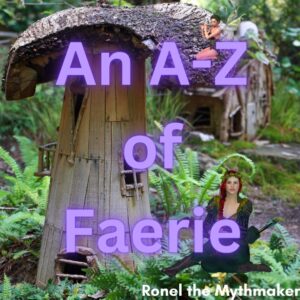
Of all the shape-shifting Fae, this one embodies the capricious nature of the Fae the most. At least in my opinion.
Caprice [kap-reess] n sudden change in attitude capricious adj tending to have sudden changes in attitude (Collins English Dictionary).
For clarification…
Which, of course, makes this creature a lot of fun to write about. But let us first look at the folklore behind this faery.
Folklore
North-East of Scotland by Walter Gregor [1881]
WATERKELPIE.
WATERKELPIE was a creature that lived in the deep pools of rivers and streams. He had commonly the form of a black horse. He appeared at night, and often and often have travellers, in passing through fords or over old bridges, heard him go splash, splash through the water. At times he approached the traveller, and by some means or other induced him to mount him. He rushed to his pool, and carried. the unsuspecting victim to his death. At times he would come night after night to a farmsteading or a sheeling, and cause great fear and much annoyance.
He might be caught, and when caught he could be made to do much heavy work. He who was to catch him had to watch for an opportunity of casting over his head a bridle, on which had been made the sign of the cross. When this was done the creature became quite quiet. He was commonly employed in carrying stones to build a mill or a farm-steading; and, when he was again set free, he took his leave, repeating the words–
“Sehr
back an sehr behns
Cairrit a’ ——‘s stehns.”
[paragraph continues] He could be killed. A blacksmith had a small croft. He sent his wife, family, and cow to the sheeling during summer. When the blacksmith was employed in his work, waterkelpie took advantage of his absence, and paid frequent visits to the sheeling, much to the terror and annoyance of the family. At last the wife told the husband. He resolved to kill him. The wife took fright at the proposal, and tried to dissuade him, under the fear that kelpie would carry him off to his pool, but to no purpose. The smith prepared two long, sharp-pointed spits of iron and repaired to the sheeling. He put a large fire on the hearth, and laid the two spits in it. In a short time kelpie made his appearance as usual. The smith waited his opportunity; and with all his might drove the red-hot spits into the creature’s sides. It fell a heap of starch, or something like it.
A hardy Highlander was returning home on one occasion from a sacrament. He was on horseback. He had charge of a number of horses that were at pasture on the side of a lonely loch. The loch lay in his way home, and he would pass it, and see whether it was all well with the animals. He came upon them all in a huddle, and, to his astonishment, he saw in the midst of them what he thought was a grey horse that did not belong to the herd. He looked, and, in the twinkling of an eye, he saw an old man with long grey hair and a long grey beard. The horse he was riding on immediately started off, and for miles, over rocks and rough road, galloped at full speed till home was reached. 1
In many of the deep pools of the streams and rivers guardian-demons were believed to reside, and it was dangerous to bathe in them. 2
Sometimes, when a castle or mansion was being sacked, a faithful servant or two contrived to rescue the plate-chest, and to cast it into a deep pool in the nearest stream. On one occasion a diver was got to go to the bottom of such a pool to fetch up the plate of the neighbouring castle. He dived, saw the plate-chest, and was preparing to lift it, when the demon ordered him to go to the surface at once, and not to come back. At the same time the demon warned him that, if he did come back, he would forfeit his life. The diver obeyed. When he reached the bank he told what he had seen, and what he had heard. By dint of threats and promises of large reward, he dived again. In a moment or two afterwards his heart and lungs rose and floated on the surface of the water. They had been torn out by the demon of the pool.
It was the common opinion that some rivers and streams were more bloodthirsty than others, and, therefore, seized more victims than their milder companions. When an accident did happen, comparisons of course were drawn between the number that had been drowned in this and the next stream or river, and the stream or river was spoken of with a sort of awe, as if it were bloodthirsty and a living creature.
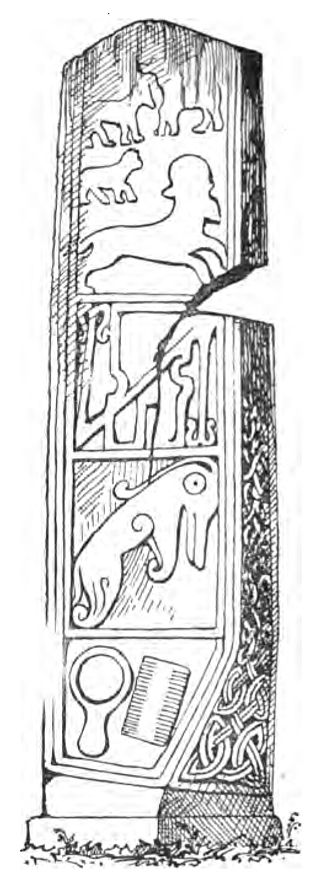
Scottish Fairy and Folk Tales by George Douglas [1901]
THE DOOMED RIDER.
“Tim Conan is as bonny a river as we hae in a’ the north country. There’s mony a sweet sunny spot on its banks, an’ mony a time an’ aft hae I waded through its shallows, whan a boy, to set my little scauting-line for the trouts an’ the eels, or to gather the big pearl-mussels that lie sae thick in the fords. But its bonny wooded banks are places for enjoying the day in–no for passing the nicht. I kenna how it is; it’s nane ol your wild streams that wander desolate through a desert country, like the Avon, or that come rushing down in foam and thunder, ower broken rocks, like the Foyers, or that wallow in darkness, deep, deep in the bowels o’ the earth, like the fearfu’ Auldgraunt; an’ yet no ane o’ these rivers has mair or frightfuller stories connected wi’ it than the Conan. Ane can hardly saunter ower half-a-mile in its course, frae where it leaves Contin till where it enters the sea, without passing ower the scene o’ some frightful auld legend o’ the kelpie or the water-wraith. And ane o’ the most frightful looking o’ these places is to be found among the woods of Conan House. Ye enter a swampy meadow that waves wi’ flags an’ rushes like a cornfield in harvest, an’ see a hillock covered wi’ willows rising like an island in the midst. There are thick mirk-woods on ilka side; the river, dark an’ awesome, an’ whirling round an’ round in mossy eddies, sweeps away behind it; an’ there is an auld burying-ground, wi’ the broken ruins o’ an auld Papist kirk, on the tap. Ane can see amang the rougher stanes the rose-wrought mullions of an arched window, an’ the trough that ance held the holy water. About twa hunder years ago–a wee mair maybe, or a wee less, for ane canna be very sure o’ the date o’ thae old stories–the building was entire; an’ a spot near it, whar the wood now grows thickest, was laid out in a corn-field. The marks o’ the furrows may still be seen amang the trees.
“A party o’ Highlanders were busily engaged, ae day in harvest, in cutting down the corn o’ that field.; an’ just aboot noon, when the sun shone brightest an’ they were busiest in the work, they heard a voice frae the river exclaim, ‘The hour but not the man has come.’ Sure enough, on looking round, there was the kelpie stan’in’ in what they ca’ a fause ford, just fornent the auld kirk. There is a deep black pool baith aboon an’ below, but i’ the ford there’s a bonny ripple, that shows, as ane might think, but little depth ol water; an’ just i’ the middle o’ that, in a place where a horse might swim, stood the kelpie. An’ it again repeated its words, ‘The hour but not the man has come,’ an’ then flashing through the water like a drake, it disappeared in the lower pool. When the folk stood wondering what the creature might mean, they saw a man on horseback come spurring down the hill in hot haste, making straight for the fause ford. They could then understand her words at ance; an’ four o’ the stoutest o’ them sprang oot frae amang the corn to warn him o’ his danger, an’ keep him back. An’ sae they tauld him what they had seen an’ heard, an’ urged him either to turn back an’ tak’ anither road, or stay for an hour or sae where he was. But he just wadna hear them, for he was baith unbelieving an’ in haste, an’ wauld hae taen the ford for a’ they could say, hadna the Highlanders, determined on saving him whether he would or no, gathered round him an’ pulled him frae his horse, an’ then, to mak’ sure of him, locked him up in the auld kirk. Weel, when the hour had gone by–the fatal hour o’ the kelpie–they flung open the door, an’ cried to him that he might noo gang on his journey. Ah I but there was nae answer, though; an’ sae they cried a second time, an’ there was nae answer still; and then they went in, an’ found him lying stiff an’ cauld on the floor, wi’ his face buried in the water o’ the very stone trough that we may still see amang the ruins. His hour had come. an’ he had fallen in a fit, as ‘twould seem, head-foremost amang the water o’ the trough, where he had been smothered,–an’ sae ye see, the prophecy o’ the kelpie availed naething.”

The Element Encyclopedia of Fairies by Lucy Cooper
Kelpie:
These shapeshifting water spirits dwell in rivers and are the best known of the Scottish water horses. Most often the kelpie appears in the form of a horse or pony and lures unsuspecting wanderers into jumping on its back. Once the victim has mounted, the kelpie rushes headlong into the water, striking it with his tail with a sound like thunder and disappearing beneath the surface with a flash of light to devour his hapless rider.
Being a shapeshifter, the kelpie could also assume human form.
Aughisky:
(pronounced agh-iski) Irish water horse, known in Scottish Highlands as each uisge.
According to W. B. Yeats in Fairy Folk Tales of the Irish Peasantry (1888), aughisky were once common. They would come out of the water and gallop across the sands or field, particularly in November. If you could saddle and bridle them, they made the finest horses. However, you had to ride them inland, for at the first glimpse of salt water they would gallop headlong into it, taking their rider deep into the sea to devour them.
Cabyll Ushtey:
A Manx water horse said to frequent the banks of lakes after dark. Some say the cabyll ushtey is one guise of the shapeshifting glastyn.
Each Uisge:
(pronounced ech-ooshkya) The water horse of the Scottish Highlands, a malevolent and treacherous shapeshifter dwelling in the sea and lochs. Appearing as a noble horse, it would wait beside a loch for an unwary rider, who would find themselves held firmly to its sticky skin, unable to dismount as the horse galloped full pelt into deep water in order to drown its victim. It would then voraciously consume the body, leaving only the liver, which would later appear on the shores of the loch, the only evidence of another victim claimed by the each uisge.
The each uisge could assume human form in the shape of a handsome man.
Glastyn:
(also glashtin, glashtyn) A water horse of the Isle of Man, dangerously manifesting as a handsome man who takes great care to hide his ears beneath his curly, dark hair, as they are those of a horse. Luring his female victims with his good looks and tempting presents, he aims to subject them to a watery death.
Nuckelavee:
An ugly, skinless sea monster in the folklore of the Orkney Islands, depicted as half-horse, half-man, the rider being fused to the horse, whose sinews and veins are clearly visible. A harbinger of death and disease, the Nuckelavee is a much-feared being. Despite living in the sea, he is averse to fresh water and the only way to escape him is to cross a stream.
Nikur:
(or nennir) Water horse of Scandanavian folklore. Jakob Grimm, in Teutonic Mythology (1883), relates how it appeared as a dappled, grey horse on the seashore. The telltale sign that it is a fairy beast is that its hooves point backward. Like the kelpie and other Celtic water horses, should someone mount it, it will plunge into the water, taking the rider to a watery grave.
Noggle:
(also nuggle or nygel) Shetland kelpie or water horse. It took the form of a pretty, small, grey horse, about the size of a Shetland pony, wearing a bridle and saddle, and was generally thought to be less dangerous than the each uisge, though anyone who was tempted to ride on its back would be treated to a severe dunking as the little horse darted in to the water with its rider. A ride on a noggle did not usually prove fatal, though. Unlike the each uisge, which was known to rip its victims to pieces, the noggle would rise from the water with the rider on its back and vanish in a blue flame.
*More can be read in the book.
Encyclopedia of Fairies in World Folklore and Mythology by Theresa Bane
Originating in Scottish lore and spreading into Cornish, Icelandic, Irish, German, Orkney, and Shetland fairy lore, the kelpie is a cannibalistic, foul-tempered, and malicious water-fay. Rarely seen, when fairy or humans are not available to consume the kelpie will kill deer that wander too near its watery home.
There is also the belief it is possible to capture and tame a kelpie by managing to get a bridle over its head, however, this is a difficult and dangerous task as the kelpie is physically powerful and strong and has a singularly wilful nature. If a kelpie is bridled it will serve its new master well and make for a wonderful and versatile horse.
*More can be read in the book.

The Encyclopedia of Celtic Mythology and Folklore by Patricia Monaghan
Kelpie
Scottish spirit. In Scotland storms at sea were believed caused by these mischievous, sometimes destructive, beings. Usually they appeared as blue men, although they could also assume the fearsome shape of a water horse. …other kelpies stirred the waters only when they wished to cause trouble, so that even a smooth river or pond could turn treacherous once a traveller stepped into it.
*More can be read in the book.
Check out this Friesian Stallion and tell me you don’t think he’d make an excellent Kelpie (I just want to touch him, even if he eats me!).
Further Reading:
- FolkloreThursday: Kelpie
- Kelpie
- The Kelpie
- Kelpie: mythical water horse of Scotland
- Riding Seas: Kelpies and other fascinating water horses
- Kelpie
- Mythology of the Kelpie
- Kelpie
- Kelpies
- Scottish myths, folklore and legends
Folklore of Kelpies in a Nutshell by Ronel
Kelpies are the most distinctive magical creatures from Scotland. These water horses can shape-shift into humans, underwater monsters and gorgeous horses to lure humans under water to drown and eat them. In human form, kelpies are invariably male. They are usually depicted as grey or black horses, and as they cannot fully escape the water, their tails and manes are always dripping wet.
Kelpies inhabit lochs, streams and pools – most notably, Loch Ness. (Yes: The Loch Ness monster is a Kelpie.)
In some cases, the kelpie would devour all but the entrails of their victims, leaving it at the water’s edge for others to find. It can extend its back to carry many to the watery depths of its home before eating them. It has a sticky magical hide, so once you touch the alluring creature, you are stuck – as shown in a common Scottish folk tale (the kelpie lures nine children onto its back, chases after the tenth who strokes his nose before he cuts off his stuck finger to escape while the others are dragged into the water by the kelpie).
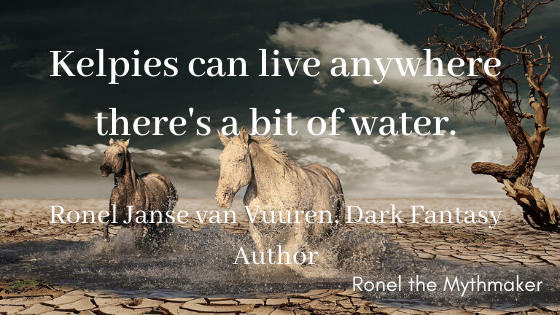
Kelpies in Modern Culture
In Annemarie Allan’s Ushig the Kelpie (titular character) both helps the children in their quest and offers them up as prey to the queen of the night. He starts in the form of a boy, yet very different with his odd eyes and strange hair, before he turns into a horse and gallops away…
In Holly Black’s Tithe the Kelpie lives in a pool of water in a copse of woods. In exchange for a price (or prize) he’ll help. In the case of saving a knight’s life, he wishes for blood. To help a Fae girl learn magic, a broken carousel horse (more beautiful in its almost useless state) will do. This Kelpie can also shift between the form of a horse and that of a human (though still inhuman).
There are others too (think the awesome show of Kelpies running on waves in The Secret of Moonacre), but these two formed my idea of what a Kelpie should be the most.
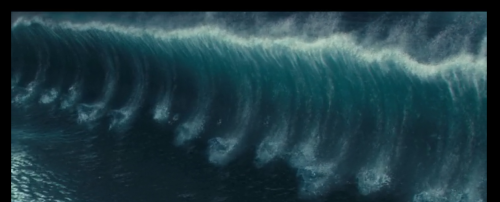
Even in the Harry Potter Wikia Kelpies are mentioned:
A Kelpie is a shapeshifting water demon native to Great Britain and Ireland. Able to take any form, they usually take the form of a horse with a bullrush mane. After luring unwary travellers onto their backs, they drag them underwater and eat them, allowing the entrails to float to the surface of the water.
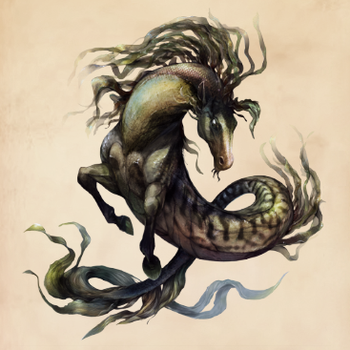
Kelpies in My Writing
Origin of the Fae: Kelpies
Kelpies use the connection they have to the water they live in to find out everything that goes on in the world around them.
Kelpies can live in any lake, river or stream. Even a murky pool will do if there’s enough glamour to fuel the Kelpie. Part of their magic is to make themselves irresistible – humans and Fae want to touch them, no matter the cost.
Mist surrounds a Kelpie as it shifts form. They have the power to change their appearance at will. Kelpies prefer the form of a horse when on land. Though they can turn into pine martens, stoats, goats, etc. They can even take on a human form.
Kelpies will eat any human or Fae it wants to. They especially like to play with their prey. Though, there are a few who stick to eating fish.
Kelpies only appear outside water when they are summoned, hungry or have to go to a mandatory Fae gathering (like the Tithe every seven years). It usually shape-shifts from an underwater monster to something alluring – like a horse – before enticing humans/Fae to touch it, at which point its skin will become adhesive and it will take its prey down to a watery grave (and the Kelpie will have lunch).
Though it is said that only the liver or entrails are left over from a Kelpie’s meal (seen floating on the surface), that’s just the personal preference of some. Not all Kelpies have the same taste in food (just like everyone else).
Kelpies have power over the water they live in: they can cause floods to hinder or drown pursuers/victims.
They have an odd sense of humour (e.g. laughing when someone nearly dies in a bog).
Kelpies are good in a fight. They change into water as soon as an opponent tries to punch/curse/suck the life out of them.
Kelpies do whatever they wish, whatever whim takes them. Even the supposedly bad ones who feast on humans and Fae can be a trusted ally – just like the supposedly good Kelpies who only eat fish can be your worst enemy.
Kelpies are always dripping wet. Once they start to dry out, they need to return to the water or risk death from dehydration.
How to summon Kelpies:
–A rhyme (if you know the right one) will call the Kelpie from the depths.
–A Cù Sìth can summon one by simply barking.
–A blood offering – a bit of blood on a leaf placed on the water – along with calling: ‘Kelpie, I bid thee forth.’ will summon the Kelpie to your presence.
Though, beware: the Kelpie will demand more, depending on what you want from it.
Like all capricious Fae, it depends on the individual Kelpie whether it will be friend or foe.
Kelpie translated to Afrikaans: Waterperd
See them in action:
Once… Tales, Myths and Legends of Faerie

‘Water!’ yelled the kelpie and ran into a pool.
The faery dog and faery cat watched the horse-like creature roll around in a heap of leaves.
<Should we tell him?> the faery cat asked, barely keeping his laughter in.
<When you are done playing in the leaves, can we move on?> Tony asked the kelpie.
The kelpie stopped rolling around and whinnied. He looked around and realised that nothing was as it seemed. With as much dignity as he could muster, he stood up and shook the leaves off.
The Fae of Bremen, Once… Tales, Myths and Legends of Faerie
What was your first experience with Kelpies? Do you think that the Loch Ness Monster is a Kelpie? Anything about Kelpies you’d like to add? Check out my Pinterest board dedicated to the Kelpie.
You can listen to this post on my podcast:
You can now support my time in producing folklore posts (researching, writing and everything else involved) by buying me a coffee. This can be a once-off thing, or you can buy me coffee again in the future at your discretion.
Want a taste of my writing? Sign up to my newsletter and get your free copy of Unseen, Faery Tales #2.


No-one writes about the fae like Ronel Janse van Vuuren.


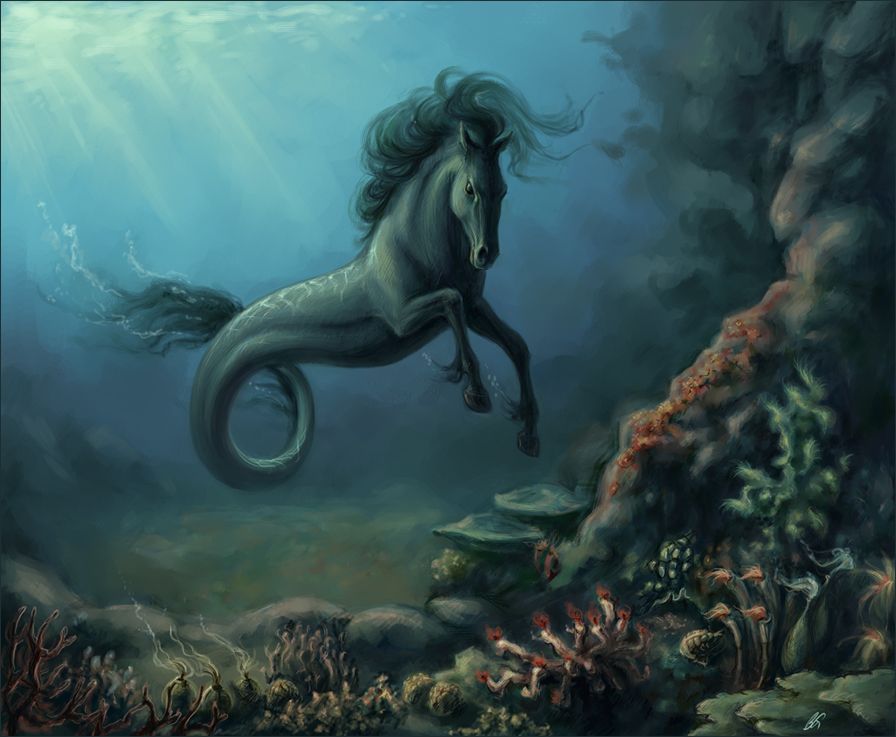


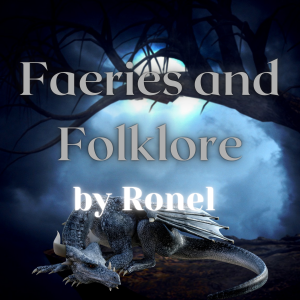

Fascinating lore! I vaguely remember reading some Scottish legends about girls who managed to tame kelpies…
The Multicolored Diary
Where I live, a Kelpie is a breed of sheep dog. I have to wonder who named them… Zalka, I am not surprised it was girls who tamed those water horses. Girls love their ponies!
I saw that when I Googled for images 🙂
Something to do with harnessing them, but I couldn’t verify it in different sources.
Wow, pretty horses! Love the giant heads too.
K is for Kaleidoscope
Thanks 🙂 They’re my favourite breed.
The story about the man’s organs rising to the top of the water is creepy.
Which was the point, don’t you think ?
This is so interesting. Just the part you shared at the top of the post about the legend gives me ideas for a story.
That’s awesome!
Sheesh, makes horses seem sinister! There does seem to be a common thread running through most of the descriptors.
It does — and mine like to remind me that they can be sinister without having any magic tied to them (rushing up to me in the dark is one of their favourite tricks).